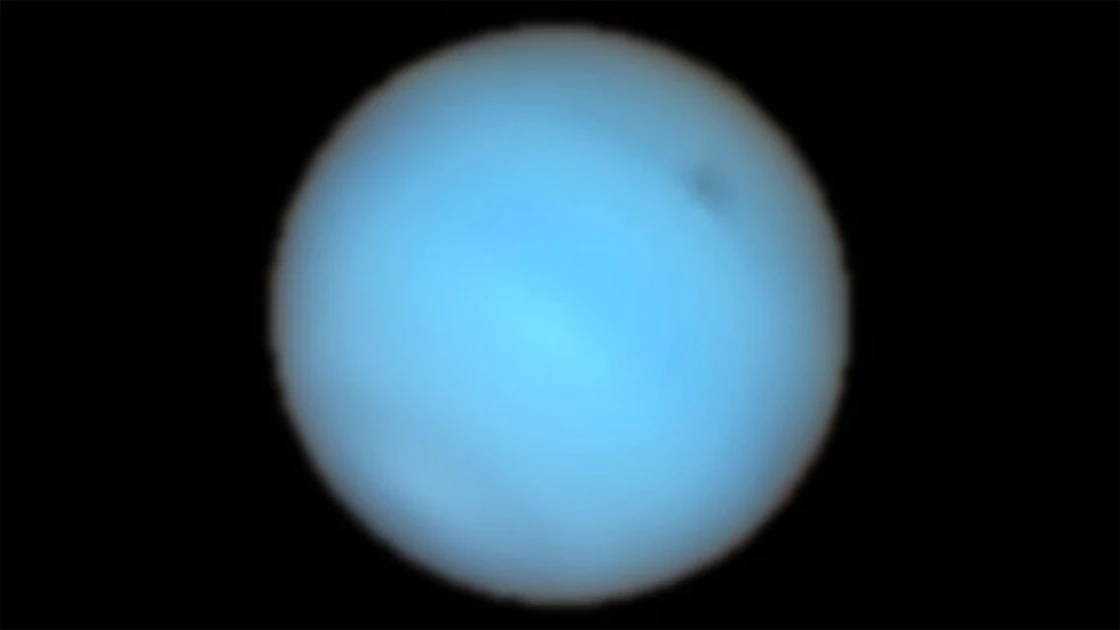
In 1989, Voyager 2 flew by Neptune, revealing for the first time a strange black spot in the planet’s atmosphere that baffled scientists. Which is the image you will see below.
Now, for the first time, we’ve been able to spot the mysterious spot from Earth, using instruments that provide unprecedented resolution, helping scientists understand why the spot appears so dark and how it differs from spots on other planets.

I’m excited that not only have we detected the first spot of Earth, but we’ve also recorded the reflectance spectrum of such a feature for the first time. – Patrick Irwin, astronomer at the University of Oxford
So Neptune’s dark spots are anticyclones like Jupiter’s Great Red Spot, but with some important differences. At first, they last for a much shorter period of time, and they come and go within a few years. Also, unlike storms on Jupiter and Saturn, they are thought to be cloud-free at their centres.
Neptune’s distance has always made studying this phenomenon difficult, as since 1994 Hubble has been the only instrument capable of recording the spots. But when a big storm came up in 2018, scientists used the ground-based MUSE (Multi-Unit Spectroscopic Explorer) Very Large Telescope in Chile. MUSE was able to detect sunlight reflecting off Neptune and analyze it into wavelengths to form a three-dimensional spectrum of the planet.
Knowing that different wavelengths are associated with different heights in Neptune’s atmosphere, the researchers found the height of the spot. In fact, they discovered that it is not a “hole” in the planet’s atmosphere.
The darker color is the result of darker particles in the hydrogen sulfide layer below the top layer of the aerosol. Scientists think this may be due to localized heating at the base of the anticyclone, which vaporizes the hydrogen sulfide ice to reveal the dark center of the anticyclone.
But they also found another surprise, a bright cloud accompanying the anticyclone. This type of cloud had not been seen before, so instead of staying high in the atmosphere, it hovered at the same height as the dark tornado.
This is an unprecedented increase in humanity’s ability to observe the universe. Initially, we were able to monitor these sites by sending spacecraft there, like Voyager. Then we developed the ability to do it remotely using Hubble. Now, technology has advanced enough that we can do it from the ground up. – Michael Wong, an astronomer from the University of California
The research was published in Nature Astronomy.
Follow Unboxholics.com on
google news
To be the first to know the latest news about technology, video games, movies and series. Follow Unboxholics.com on Facebook, Twitter,
Instagram, Spotify
And Tik Tok.

“Total alcohol fanatic. Coffee junkie. Amateur twitter evangelist. Wannabe zombie enthusiast.”








More Stories
Is this what the PS5 Pro will look like? (Image)
Finally, Windows 11 24H2 update significantly boosts AMD Ryzen – Windows 11 performance
Heart Surgeon Reveals The 4 Things He ‘Totally Avoids’ In His Life